If you'd ask me what my favorite Indonesian food is, I have no answer. YET. It's so hard to decide. So many come to mind. But when it comes to soup, it was love at first sip with soto betawi.

It might seem strange to those familiar with me, considering that I lived in Sumatra and only visited Jakarta a couple of times. And this soup---soto betawi---is native to Jakarta. In fact, my co-teacher once told me that the native people of Jakarta are called Betawi.
It all started on my second trip to the Indonesian capital for a workshop. Since then, whenever I found myself in the heart of Java, I always made sure to have a bowl of soto betawi.

The gray Jakarta sky was foreboding with rain, so my co-teacher suggested that we stay at the hotel for the evening after the workshop. We could see the warung (street food stall) with a big soto betawi banner from our hotel window. Famished, my co-teacher suggested that we go try this street food. So we took our umbrellas and crossed the narrow street.
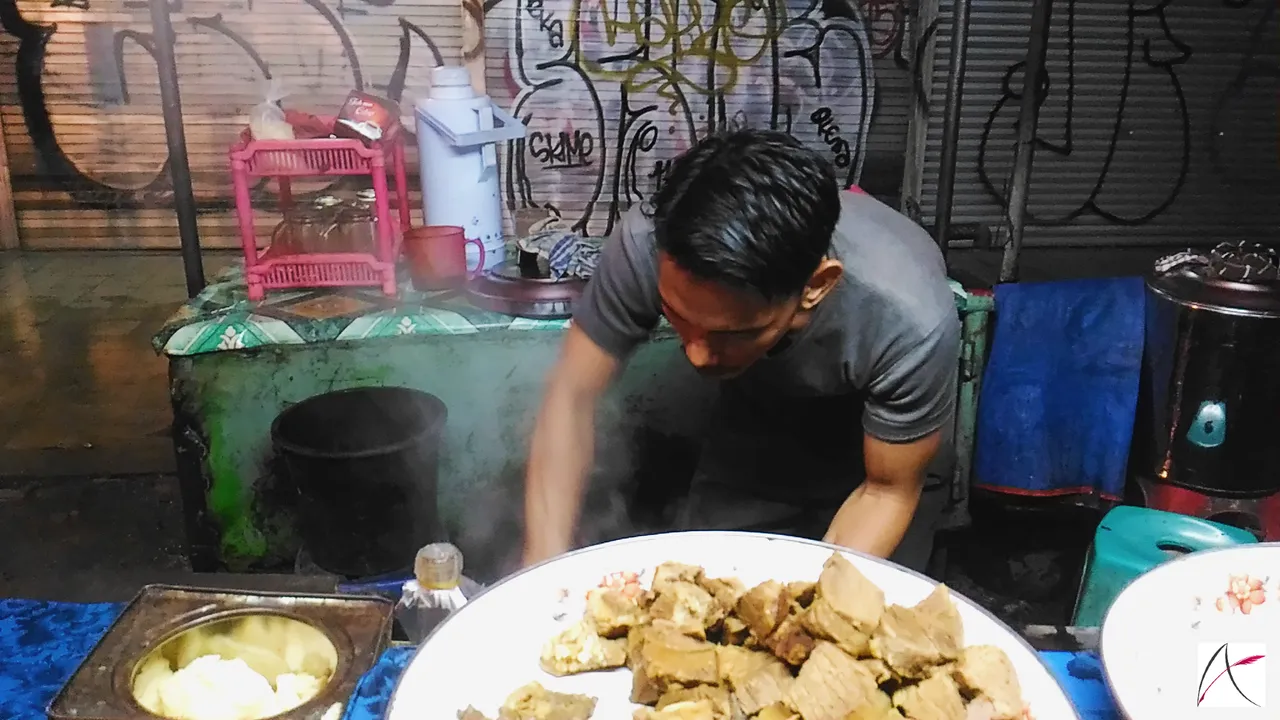
Here is bapak koki (mister cook) preparing our meal. The shops at the back are already closed for the night. Those are beef slices on the plate. Inside the tin can at the left seems to be slices of lontong, which is similar to the Cebuano pusu (steamed hanging rice).
Like most Indonesian dishes, I can't name all the herbs and spices that they have included in this hearty dish. But the base is coconut milk. It has hints of black pepper, chili, and curry. Yum . . . And the meat is soft and chewy daging sapi (beef) with innards thrown in for good measure. It's similar to the Cebuano paklay in terms of the innards, but since it's beef, it has that sweet, fatty goodness distinct to this red meat. Combine that with the spices and coconut milk and it creates the ultimate bliss point in the mouth.
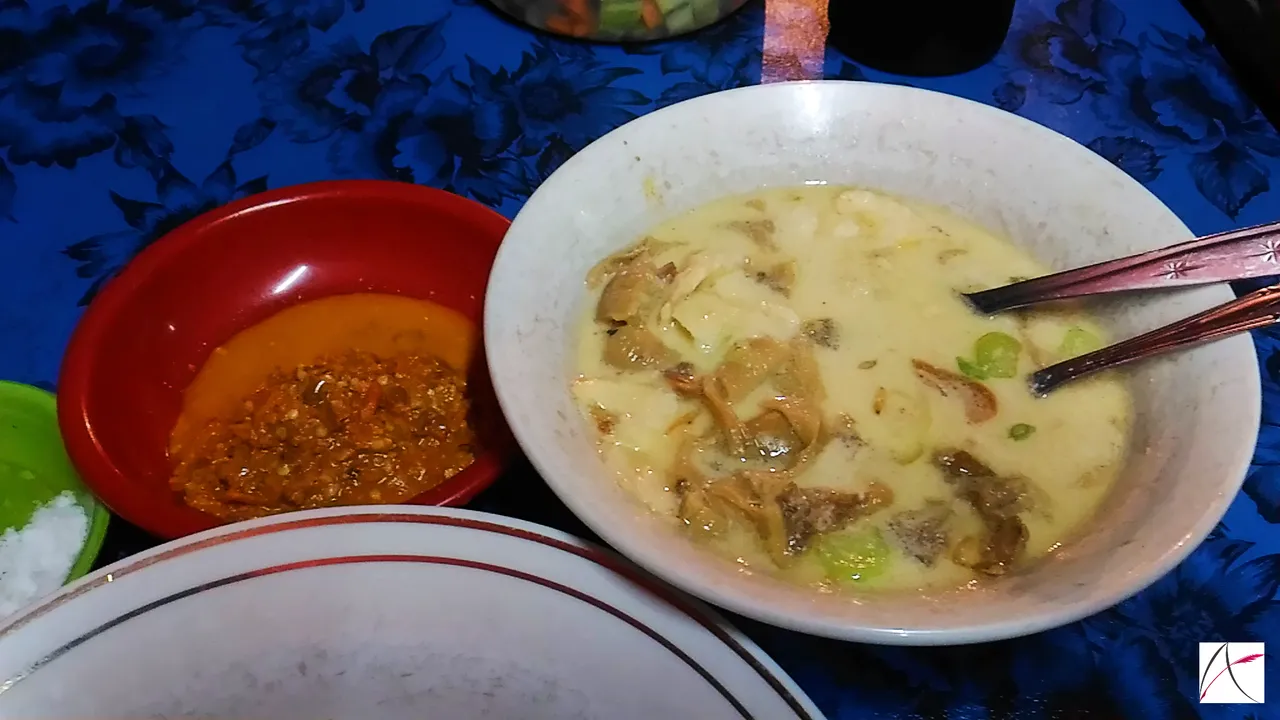
Indonesian soups are always garnished with crispy fried shallots, but soto betawi also includes fresh minced spring onions.
Of course, it is best eaten hot and spicy. Yes, spicy. Indonesians love all things spicy. If you'd order food and request that it should be tidak pedas (not spicy), they would advise you that it is tidak enak (not delicious). And I agree. The spicy sambal (chili sauce) is essential to the full Indonesian gastronomic experience.
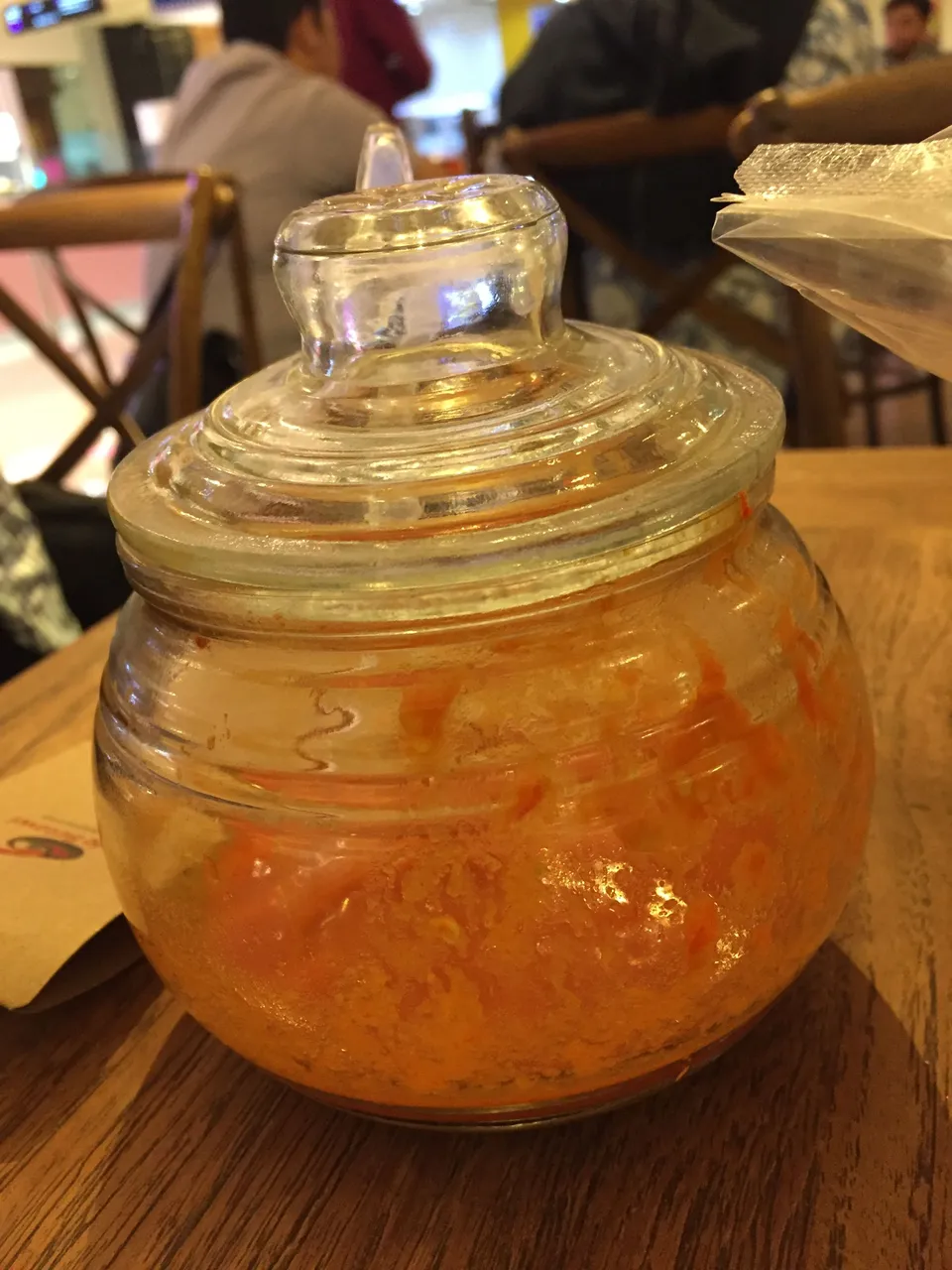
Here is a massive sambal jar at a mall restaurant where I also had a bowl of my favorite soup. Authentic sambal is always prepared fresh daily.
It seems to me that soto betawi tasted better in the warung. For comparison, the bowl I had at a restaurant at the mall was a bit different. The same with the one I tried at a hotel. I mean, they were also delicious, but they seemed polished. On both occasions, I noticed they only used lean beef.
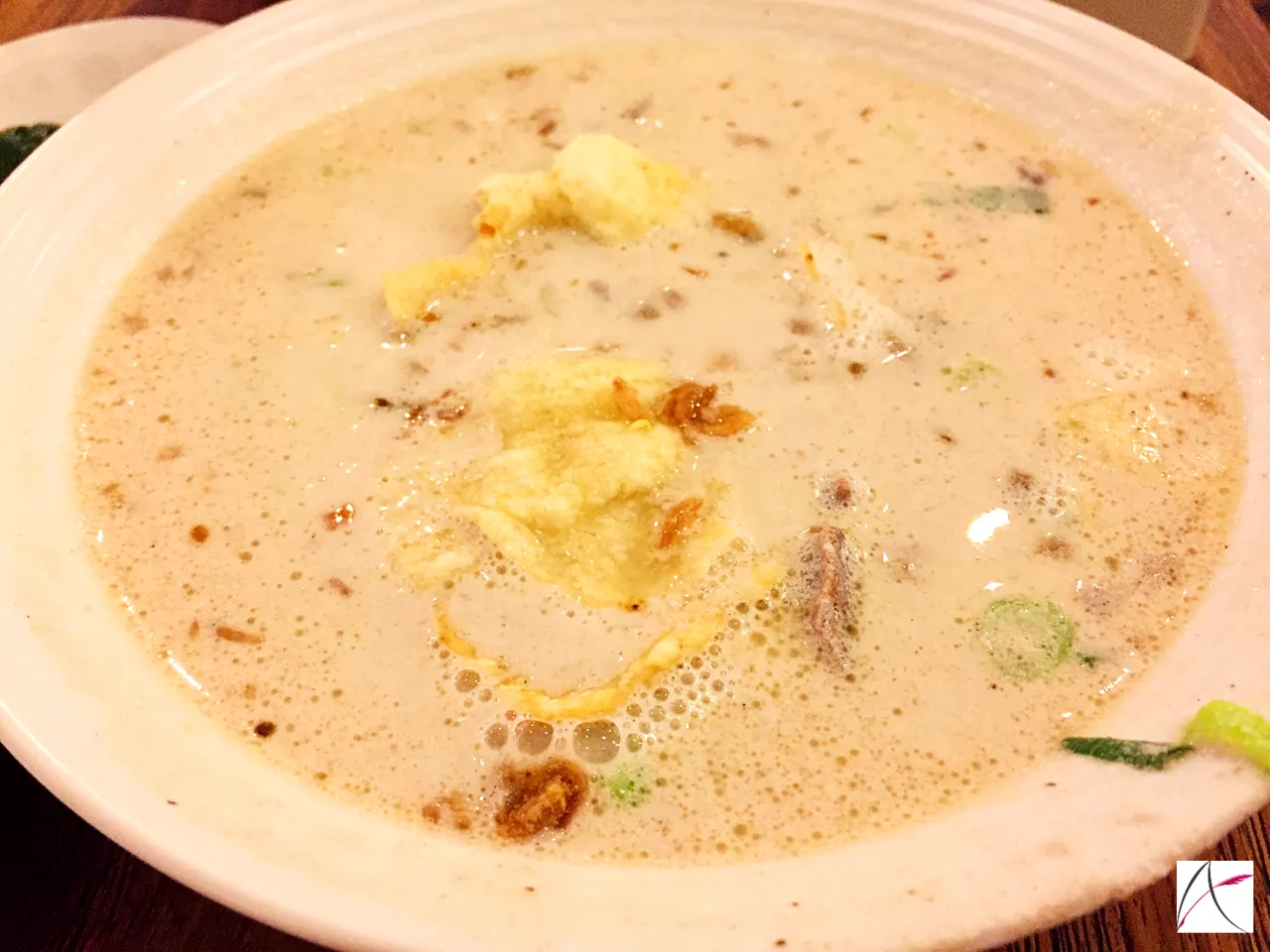
But what I like about this restaurant version is that the krupuk (crispy cassava crackers) are a perfect addition.
So I can say that the beef innards and fat included in the street food version sealed the deal for me. And my co-teacher told me that it was the traditional version. Aaah, now that I've written this, I can no longer wait to go back to Jakarta and have a bowl of this delicious soup again.
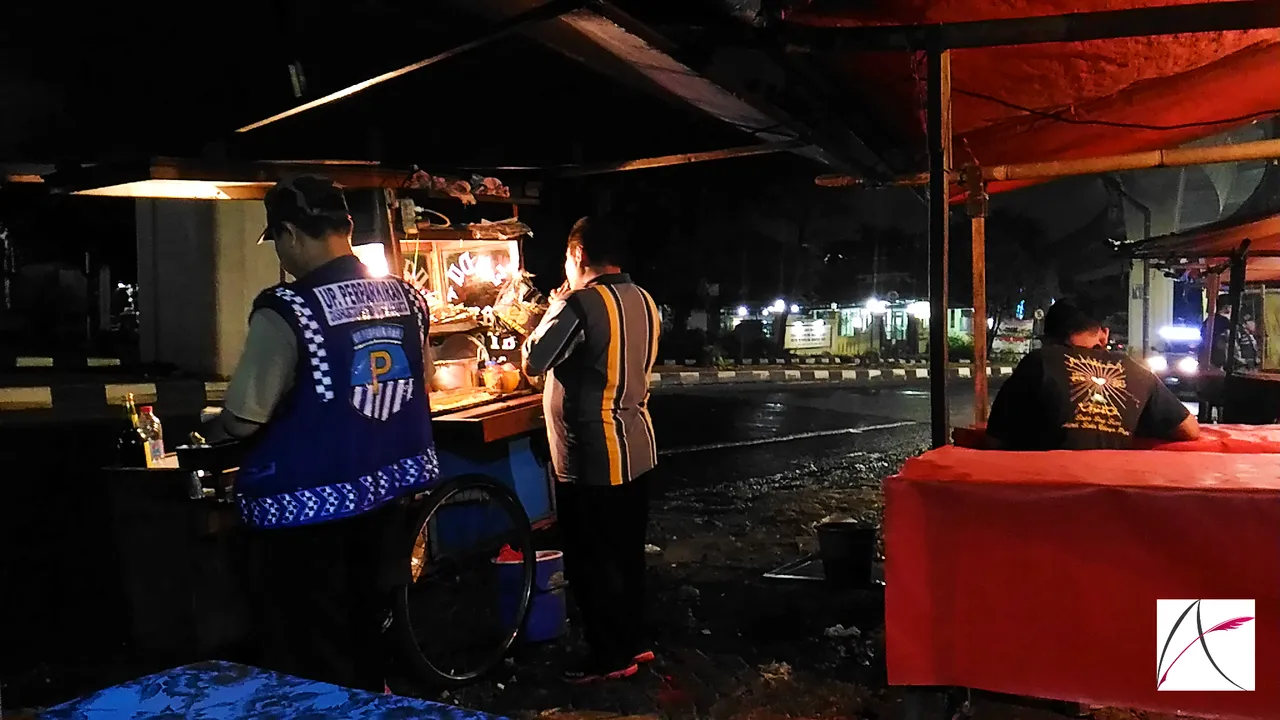
And yes, I did pair my soto betawi with a serving of sate ayam (chicken skewers) from this nearby stall. What a feast!
Ayo! Kita makan! (Come on! Let's eat!)

